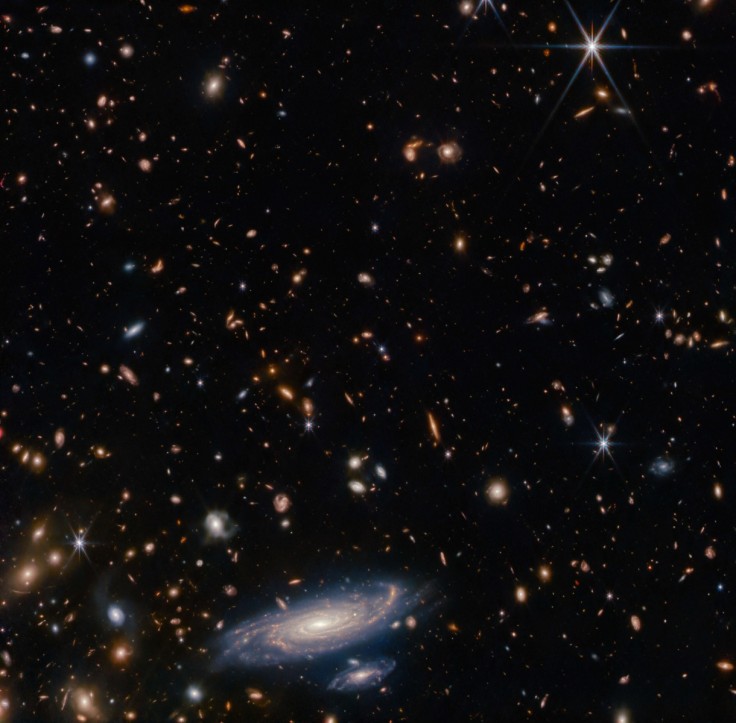The James Webb Space Telescope (JWST or Webb) shows its quality again.
NASA and the European Space Agency (ESA) recently released an image from the space observatory that features a high-definition photo of a spiral galaxy in a sea of stars and other galaxies more than a billion light-years away from Earth.
NASA officials mentioned that the picture it released presumably came from before Webb experienced a glitch affecting one of its sensors and taking the entire instrument out of commission.

James Webb Space Telescope LEDA 2046648 Picture
NASA and the ESA released a high-definition picture of the spiral galaxy LEDA 2046648 within a sea of countless galaxies and stars captured by Webb's Near-InfraRed Camera (NIRCam), per Space.com.
Webb took the picture while observing the white dwarf star WD1657+343, a celestial object Webb used to calibrate its Near-Infrared Imager and Slitless Spectrograph (NIRISS).
LEDA 2046648 is located more than 1 billion light-years away from Earth, in the constellation of Hercules. Despite this distance, however, Webb was able to take a picture of the galaxy and its surrounding stars and fellow galaxies in great detail.
For instance, the picture clearly shows the spiral galaxy's arms, allowing people to see them individually all the way to its center. Additionally, it also showed the galaxies and stars that surround LEDA 2046648, all of them marked by six-pointed diffraction spikes that are a signature of Webb's observations.
The fact that Webb could still take pictures of the galaxies and stars, along with the smaller, more distant galaxies and bright stars surrounding LEDA 2046648, shows how capable Webb's NIRCam and its resolution in infrared wavelengths are, per the ESA.
Interestingly, the space agency described calibration images like the picture of LEDA 2046648 as "a critical key" to verify the telescope's capabilities as it was prepared for science operations.
Webb's capability to detect and capture such stars and galaxies allow humanity to go back in time - all the way back to around 250 million years after the Big Bang.
Meanwhile, the Hubble Space Telescope, Webb's still-operating predecessor, could only detect and capture light 400 million years after the Big Bang.
A Lucky Image
Webb's picture of LEDA was previously in the hands of fate. The space observatory took the picture presumably before Jan. 15, when its NIRISS experienced a glitch that affected one of its sensors and took the entire instrument out of commission.
The problem is due to a "communications delay" that resulted in the NIRISS' flight software timing out, making the Webb team, consisting of employees from NASA and the Canadian Space Agency (CSA), spend days testing and evaluating the situation.
Thankfully, the team fixed Webb's NIRISS on Feb. 1, half a month since the glitch first happened.
This incident isn't Webb's first time with glitches. A problem with a grating wheel inside Webb Mid-Infrared Instrument (MIRI) surfaced in August 2022 but was quickly remedied and repaired.









